Guangxi Zhuang Autonomous Region, often referred to simply as “Guangxi,” is located in southern China. Bordered by Guangdong to the east, Yunnan to the west, and the Beibu Gulf to the south, Guangxi is the country’s only coastal autonomous region. Its capital, Nanning, is known for its green urban spaces and mild climate. Guilin is world-renowned for its picturesque karst mountains and rivers. Other cities, such as Beihai, Chongzuo, and Baise, showcase unique charm through a mix of tropical scenery and strong ethnic culture.
Geographically, Guangxi is dominated by mountains and limestone formations, with stunning rivers and forests spread throughout the region. The province is rich in both natural beauty and cultural heritage. Traditional festivals, diverse cuisines, and a strong sense of ethnic identity make Guangxi a compelling destination for travelers seeking more than just sightseeing. It’s a place where history, landscape, and culture come together seamlessly.
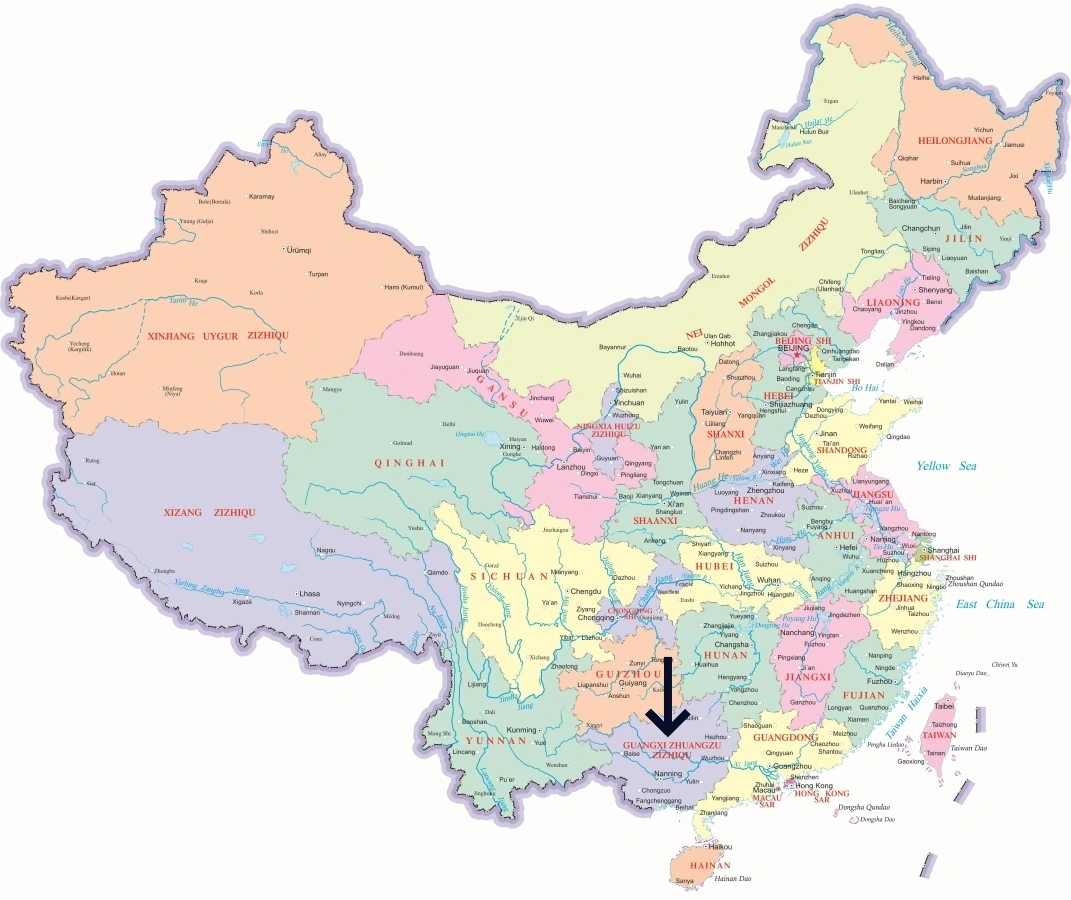
Guangxi has 14 prefecture-level cities, each offering a unique combination of history, culture, and nature. Whether you’re looking for dramatic landscapes, vibrant local traditions, or coastal getaways, Guangxi offers something for everyone.
The most popular cities among tourists include Nanning, Guilin, Beihai, and Liuzhou. However, less-visited destinations like Chongzuo, Baise, Fangchenggang, Hechi, Laibin, Hezhou, and Qinzhou are also well worth exploring for those interested in hidden gems and authentic experiences.
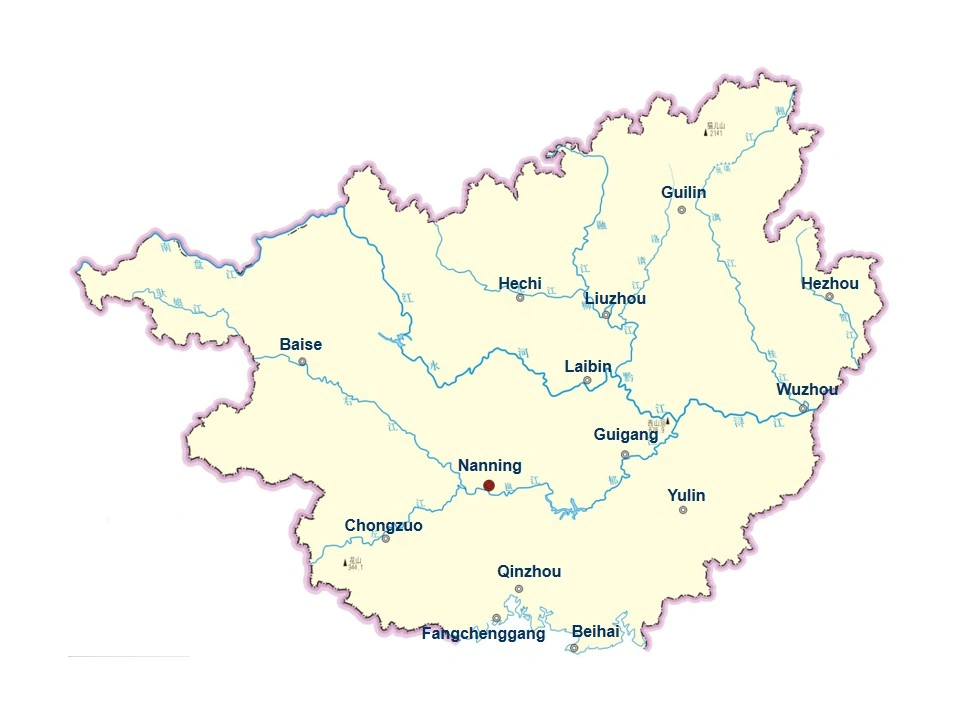
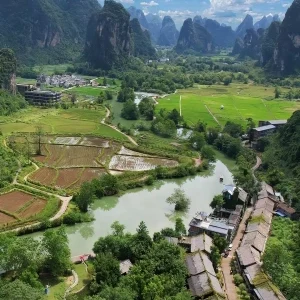
As the provincial capital, Nanning is often called “China’s Green City” for its lush greenery and well-planned parks. Visitors can explore Qingxiu Mountain, Nanhu Lake Park, and the Guangxi Ethnic Museum. The city blends modernity with ethnic traditions.

Famous for its karst peaks and the Li River, Guilin is arguably China’s most iconic landscape destination. The city offers sights like Elephant Trunk Hill, Reed Flute Cave, and scenic boat cruises to Yangshuo.

Located on the coast, Beihai is a relaxing beach town known for its white sands and crystal-clear waters. Silver Beach and Weizhou Island are perfect for sunbathing, snorkeling, and island adventures.
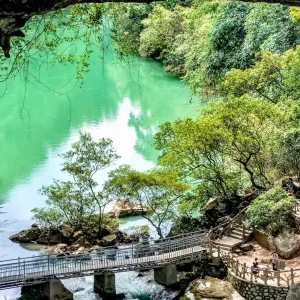
An industrial city with surprising beauty, Liuzhou is set along the Liujiang River and surrounded by mountains. It’s also home to the now-famous Luosifen (snail rice noodles), attracting food lovers from all over.

Situated near the Vietnam border, Chongzuo features natural attractions like the Detian Waterfall and Mingshi Scenic Area. It’s a great place to experience Zhuang culture and scenic countryside.
Guangxi boasts some of the most diverse landscapes and cultural experiences in China. From dramatic waterfalls and tropical coastlines to charming river towns and ethnic villages, it’s a top choice for both nature lovers and cultural explorers.
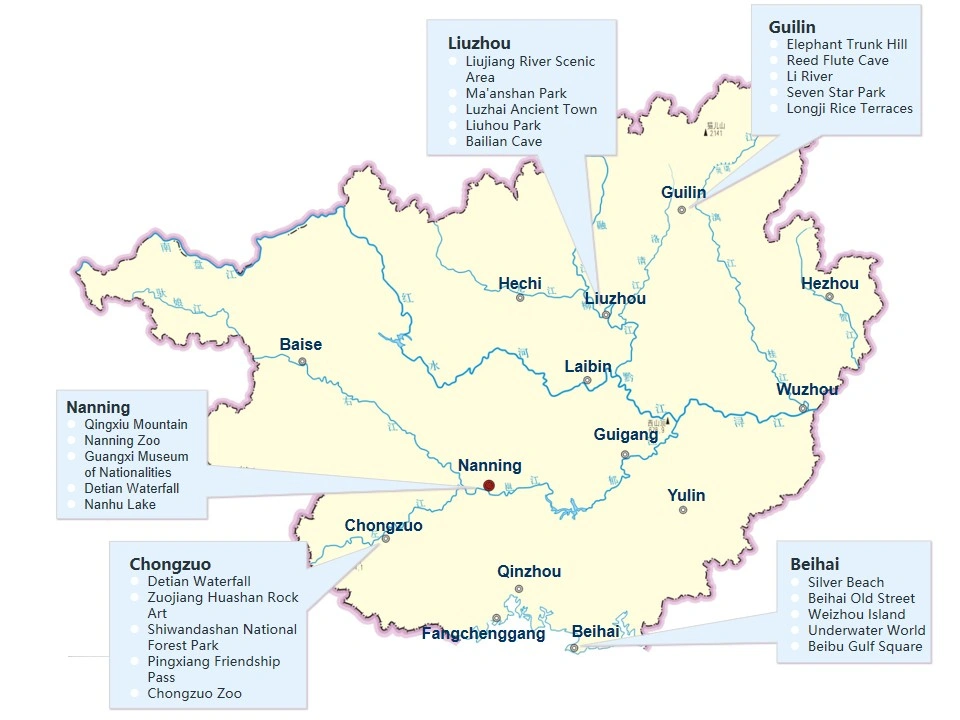
-300x300.webp)
Famous for its postcard-perfect scenery, the Li River cruise is a must-do. Lush green peaks, mirror-like water, and fisherman casting nets create an unforgettable journey through southern China’s natural wonderland.
-300x300.webp)
Located on the China–Vietnam border, it’s Asia’s largest transnational waterfall. The roaring falls, surrounded by jungle, are most spectacular in summer.
-300x300.webp)
A volcanic island with coral reefs and black-rock coastlines, ideal for scuba diving, snorkeling, and catching island sunsets.
-300x300.webp)
A natural stone formation shaped like an elephant drinking from the river—an iconic symbol of Guilin.
-300x300.webp)
A peaceful retreat with gardens, temples, and forested trails. It's especially popular in spring and autumn.
-300x300.webp)
Often called “Little Guilin,” this idyllic countryside features rice paddies, karst hills, and traditional Zhuang homes. It’s a dream spot for photographers and nature lovers.
Guangxi food is heavily influenced by its ethnic diversity, particularly Zhuang, Yao, and Dong cultures. The cuisine is known for bold flavors—especially sour, spicy, and fragrant combinations. Rice noodles, fresh herbs, and fermented ingredients are staples across the region.
Every city has its signature dish. Whether you’re sampling street snacks or sitting down for a traditional feast, the food in Guangxi delivers a strong sense of place.
-300x300.webp)
A cult favorite nationwide, this rice noodle soup features a pungent snail broth, pickled bamboo shoots, and crunchy peanuts. Its strong aroma is divisive but beloved by fans.
-300x300.webp)
“Old friend noodles” are a spicy, tangy, and hearty dish with minced beef or pork, fermented soybeans, and garlic. A comforting local favorite.
-300x300.webp)
Typically served dry or in soup, these noodles are topped with sliced meat, pickles, and a savory broth—perfect for breakfast or a quick meal.
-300x300.webp)
Chopped duck marinated and stir-fried with fresh lemon, chili, and spices. The result is tender, tangy, and deeply flavorful.
-300x300.webp)
Snails are filled with minced pork, garlic, and herbs before being steamed or stir-fried. They’re chewy, aromatic, and highly addictive.
-300x300.webp)
Traditionally made during festivals, this dish features rice dyed naturally with plant extracts. Each color carries symbolic meaning—perfect for festive photos and cultural immersion.
Guangxi covers approximately 237,600 square kilometers, with a resident population of around 50 million. Below is a breakdown of land area and population by city:
Nanning: 22,112 km², approx. 8.7 million
Guilin: 27,800 km², approx. 4.8 million
Liuzhou: 18,600 km², approx. 3.9 million
Beihai: 3,337 km², approx. 1.7 million
Chongzuo: 17,800 km², approx. 2.3 million
Fangchenggang: 6,177 km², approx. 1.1 million
Guigang: 10,800 km², approx. 4.1 million
Yulin: 12,800 km², approx. 5.7 million
Baise: 36,200 km², approx. 3.7 million
Hechi: 33,500 km², approx. 3.1 million
Hezhou: 11,800 km², approx. 2.0 million
Laibin: 13,400 km², approx. 2.2 million
Qinzhou: 10,800 km², approx. 3.1 million
Wuzhou: 12,500 km², approx. 2.8 million
Note: These figures are based on recent census estimates and may vary slightly over time.
Guangxi has a subtropical monsoon climate, marked by warm temperatures, high humidity, and abundant rainfall. Here’s a typical month-by-month breakdown:
January: Mild and dry; average temperatures 9–17°C (48–63°F)
February: Gradual warm-up with more rain; 11–18°C (52–64°F)
March: Spring blooms and ideal travel weather; 15–23°C (59–73°F)
April: More humid and warmer; 20–27°C (68–81°F)
May: Rainy and muggy; 23–30°C (73–86°F)
June: Peak of rainy season; 25–32°C (77–90°F)
July: Hottest month, especially inland; 26–34°C (79–93°F)
August: Hot and stormy, with occasional typhoons; 25–33°C (77–91°F)
September: Begins to cool slightly; 24–31°C (75–88°F)
October: Comfortable temperatures; 20–28°C (68–82°F)
November: Cooler and drier; 16–24°C (61–75°F)
December: Noticeably cooler but not cold; 11–20°C (52–68°F)
Best time to visit Guangxi: October to April, when temperatures are pleasant and rainfall is lighter.
Here are the main postal codes and telephone area codes for Guangxi’s major cities:
Nanning: Zip 530000, Area Code 0771
Guilin: Zip 541000, Area Code 0773
Liuzhou: Zip 545000, Area Code 0772
Beihai: Zip 536000, Area Code 0779
Chongzuo: Zip 532200, Area Code 0771
Fangchenggang: Zip 538000, Area Code 0770
Guigang: Zip 537100, Area Code 0775
Yulin: Zip 537000, Area Code 0775
Baise: Zip 533000, Area Code 0776
Hechi: Zip 547000, Area Code 0778
Hezhou: Zip 542800, Area Code 0774
Laibin: Zip 546100, Area Code 0772
Qinzhou: Zip 535000, Area Code 0777
Wuzhou: Zip 543000, Area Code 0774

 English (US)
English (US)